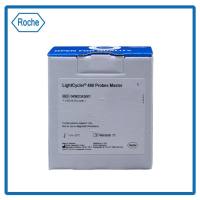Gene isolation by screening gt11 expression libraries with DNA-binding site probes
互联网
784
A fundamental goal of gene analysis is to determine what factors regulate the temporal and spatial expression of the gene of interest. This type of analysis requires the identification of the promoter region of the gene, characterization of the specific DNA sequences that regulate the expression of the gene, and the determination of the DNA-binding factors that recognize these sequences. The first two requirements can be met by routine in vitro molecular biological techniques, such as mobility shift DNA-binding assays (1) and DNase footprinting (2) , which allow the DNA-binding sequence to be defined to a short DNA sequence, but isolating the specific DNA-binding factors that regulate the transcription of the gene, has proven to be problematic. One common strategy is to isolate the DNA-binding factor from complex mixtures of proteins and then to use a “reverse genetics” approach to clone the gene that encodes the factor. In many cases, access to large amounts of the required tissue or cell type required for biochemical purification is impracticable. A more direct approach is to screen an expression library with a short radioactively labeled DNA sequence defined in vitro as a binding site for the factor. The vector most commonly used for library construction is λgtl1 (3) , where cDNA inserts are cloned into a unique EcoRI site near the C-terminal end of the coding region of the lacZ gene. The β-galactosidase fusion protein can be induced to high levels in the presence of the inducer IPTG.









